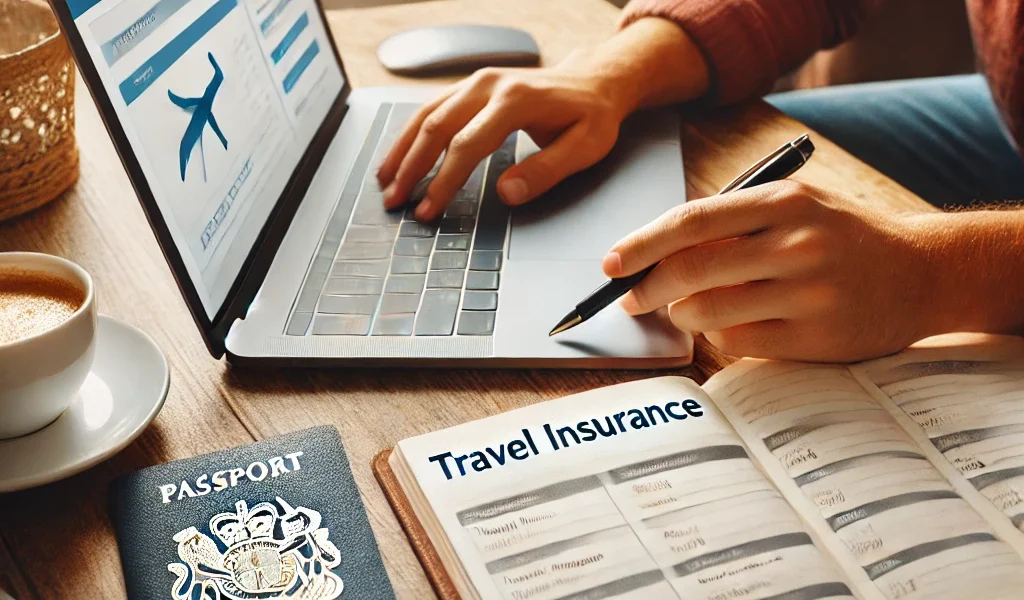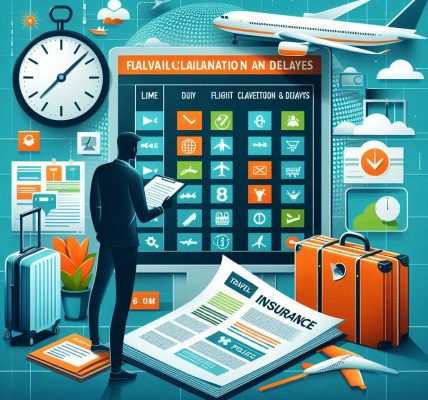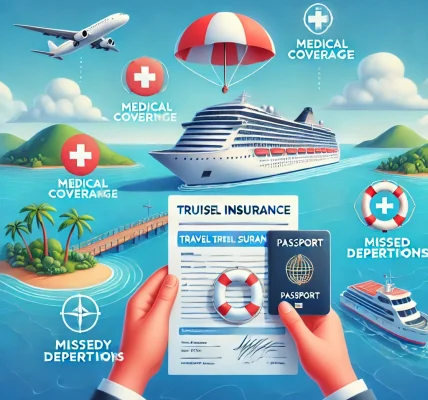Introduction
Traveling is an exciting experience, whether it’s a relaxing beach vacation, an adventurous trek, or a business trip. However, unexpected events such as medical emergencies, flight cancellations, or lost baggage can turn a dream trip into a nightmare. This is where travel insurance becomes essential.
A well-chosen travel insurance policy protects you from financial losses, ensures peace of mind, and provides necessary support in case of emergencies. In this guide, we’ll walk you through the process of selecting the right travel insurance plan so you can travel worry-free.
1. Why Do You Need Travel Insurance?
Before diving into how to choose the right travel insurance, let’s first understand why it is important:
1.1. Medical Emergencies
Many travelers assume their regular health insurance covers them abroad, but this is often not the case. If you fall sick or get injured in another country, medical expenses can be extremely high.
✅ Example: A hospital stay in the U.S. can cost over $3,000 per day. Without travel insurance, you will have to pay this amount out of pocket.
1.2. Trip Cancellations & Interruptions
Unforeseen circumstances such as illness, extreme weather, or airline issues can lead to trip cancellations. Without insurance, you may lose non-refundable bookings for flights, hotels, or tours.
✅ Example: You book a $5,000 cruise, but a week before departure, you fall ill. Travel insurance reimburses your costs if the cancellation is covered.
1.3. Lost or Delayed Baggage
Bags get lost or delayed more often than travelers realize. Travel insurance can compensate you for essential items if your luggage is missing for an extended period.
✅ Example: Your suitcase is lost on your way to Paris, and you need to buy clothes and toiletries. Your insurance reimburses you for these expenses.
1.4. Emergency Evacuations & Repatriation
Serious health conditions or natural disasters may require you to be evacuated to another country or back home. Travel insurance covers these costs, which can be extremely expensive otherwise.
✅ Example: A medical evacuation from a remote area can cost $50,000+ without insurance.
1.5. Accidents & Personal Liability
If you accidentally cause injury to someone or damage property, travel insurance covers the legal and compensation costs.
✅ Example: You accidentally damage a rental car in Italy. Your policy covers the repair expenses.
2. Key Factors to Consider When Choosing Travel Insurance
2.1. Destination-Specific Coverage
Insurance needs vary by destination. Some countries have higher healthcare costs, while others require mandatory insurance.
✔ Europe (Schengen Visa) – Requires travel insurance covering at least €30,000 in medical expenses. ✔ USA & Canada – High medical costs; look for policies with comprehensive health coverage. ✔ Adventure Destinations – If engaging in adventure sports, ensure the policy covers risky activities.
2.2. Coverage Limits & Benefits
When comparing policies, focus on these coverage amounts: ✔ Medical Expenses – Minimum $100,000 for international trips. ✔ Trip Cancellation – Should match your total non-refundable expenses. ✔ Baggage Loss – Coverage of at least $1,000 is recommended. ✔ Personal Liability – A minimum of $100,000 for legal expenses.
2.3. Pre-Existing Medical Conditions
Many policies exclude pre-existing conditions unless specifically covered. If you have a medical history, choose a plan that provides coverage.
✔ Pro Tip: Declare any existing health conditions to avoid claim denials.
2.4. Activities & Adventure Sports Coverage
Standard policies may not cover risky activities like scuba diving, skiing, or mountaineering. If your trip involves these, opt for an adventure-friendly policy.
✔ Example: If you plan on bungee jumping in New Zealand, ensure your plan covers extreme sports.
2.5. COVID-19 & Pandemic Coverage
Some insurers now provide coverage for trip cancellations due to COVID-19, medical treatment, and quarantine expenses. Check if your policy includes this protection.
✔ Look for: COVID-19 hospitalization, quarantine costs, and trip interruption benefits.
2.6. 24/7 Customer Support & Claims Process
A good policy should offer 24/7 global assistance so you can get help anytime, anywhere.
✔ Check: How to file a claim, required documents, and claim settlement speed.
3. How to Compare & Buy the Best Travel Insurance Plan
Step 1: Assess Your Travel Needs
Before buying travel insurance, ask yourself: ✔ Where am I traveling? ✔ How long will my trip last? ✔ What activities will I be doing? ✔ Do I have pre-existing medical conditions? ✔ What is my budget for insurance?
Step 2: Compare Plans Online
Use comparison websites like:
- SquareMouth (US)
- InsureMyTrip (US)
- PolicyBazaar (India)
- CompareTheMarket (UK)
Compare plans based on price, coverage limits, exclusions, and customer reviews.
Step 3: Read the Fine Print (Policy Exclusions)
Every policy has exclusions. Common ones include: ❌ Injuries due to reckless behavior (e.g., intoxication) ❌ Loss of unattended belongings ❌ Travel to high-risk destinations (war zones, pandemics) ❌ Pre-existing health conditions (unless specifically covered)
Step 4: Purchase & Save Documents
✔ Buy your policy before your trip starts. ✔ Save a digital & printed copy of your insurance details. ✔ Share the policy details with a family member or travel companion.
4. Pro Tips for Choosing the Best Travel Insurance
✔ Buy Early: Purchase your policy soon after booking your trip to maximize cancellation benefits. ✔ Check Your Credit Card: Some premium cards include free travel insurance benefits. ✔ Understand the Claims Process: Keep all receipts and medical reports in case you need to file a claim. ✔ Look for Customer Reviews: Choose a provider with a strong track record of settling claims efficiently. ✔ Compare Multiple Providers: Don’t just pick the cheapest policy; check for coverage gaps.
5. Common Myths About Travel Insurance
❌ “I don’t need travel insurance for short trips.”
✅ Even a weekend trip can have unexpected issues like flight delays or medical emergencies.
❌ “Travel insurance is too expensive.”
✅ Policies cost only 4-10% of your total trip cost but can save you thousands in emergencies.
❌ “My health insurance covers me abroad.”
✅ Most standard health plans don’t cover international medical emergencies or evacuations.
Conclusion
Choosing the right travel insurance plan is an essential step in trip planning. By assessing your needs, comparing coverage options, and reading the fine print, you can find a policy that offers financial security and peace of mind.
A little investment in travel insurance today can save you thousands of dollars in unexpected expenses tomorrow. So, before your next adventure, ensure you are covered and travel with confidence!




